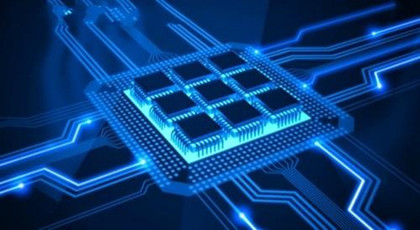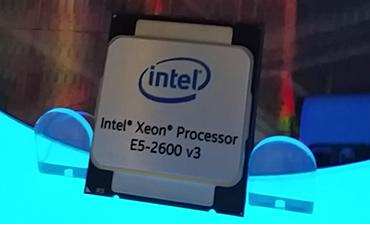This year's server chip circle is also lively, the competition is fierce, and the war continues. The turmoil in the server chip industry will change the overall technology and applications of the server, and will also change the server market. Today, the author will take everyone to review the performance of the 2014 server chip wars, as well as emerging forces.
Playback In January 2014, at the International Consumer Electronics Show (CES2014) in Las Vegas, Qualcomm CEO said that Qualcomm has the ability to manufacture ARM server chips, but did not disclose any product plans.
AMR chips are not very powerful, so they are not suitable for traditional enterprise applications, and are more suitable for providing web pages and high parallel lightweight online loads. AMD and Applied Micro were developing 64-bit ARM chips for servers, and another ARM advocate, Calxeda, has recently closed down.

Finally, there was news in November. Morenkov announced at the company's annual analyst meeting in New York that Qualcomm engineers had developed ARM server chip technology for some time. He said: "Now, we are developing a server chip main product."
However, the entry of such a huge and well-funded player will definitely have a major impact on the field of ARM server chips in the overall evolution stage. It may become an important rival of Intel, which accounts for 90% of the server chip market.
China's first Loongson 3B server and terminal come out
Playback In November, Shuguang Company launched the first domestic server based on Godson 3B processor, desktop terminal products and fully autonomous controllable trusted computing server products, realizing China's truly autonomous control in the field of information security, further consolidating The long-term planning of Dawning's independent and controllable strategy for information security will also help the country's informatization independent innovation to achieve continuous leapfrogging.
Hu Weiwu, president of Loongson Zhongke, once said, “Zhongke Longxin has been committed to establishing China's independent and controllable software system since its CPU operation in 2001. In this system, many companies jointly maintain the operation and development of the whole system. Today, we finally I saw this stage of establishing the system, and all the member companies in the system are working hard to achieve application promotion."
IBM "core" China, open POWER technology
Still in October, the China POWER Technology Industry Ecology Alliance, directed by the Ministry of Industry and Information Technology, was formally established in Suzhou today. The POWER Technology Alliance aims to discuss how to make full use of POWER's advanced technology, to absorb and innovate, to establish a sound industrial ecology, and to improve the technological level of China's chips, servers and software.
The establishment of China's Power Technology Industry Ecology Alliance means that Chinese companies (joining China Power Alliance) will be able to enjoy the authorization of IBM Power chips, and then develop their own chips (similar to ARM in the mobile Internet device chip market). The industry knows that owning its own chips, especially in the enterprise IT market, has always been the dream of Chinese companies. But is the fact really so beautiful?
It is not difficult to find out that in fact, IBM's open Power chip architecture is hoping to attract more manufacturers to join the Power camp, especially Chinese companies. This is the biggest benefit that IBM has brought to itself. IBM announced the establishment of China's Power Technology Industry Ecology Alliance, which has aroused strong repercussions in the industry, and has its own opinions. The final result is to see the development of the entire market.
In December, IBM authorized Power technology in China to make substantial progress. On the 9th of that month, the full range of Power System servers produced by Huasheng Tiancheng's member company Xinyun Dongfang was officially launched and delivered.
Intel introduced Xeon E7 v2 processor chip and E5-2600 v3 chip
February 19 news, foreign media reported that Intel released the latest version of the high-end Xeon E7 x86 processor on Tuesday. Intel executives say the processor is targeted at emerging computing and memory-intensive workloads driven by big data and IoT drives.
Intel offers 22nm Xeon E7 v2 processor chips in 20 different configurations. The different configurations provided by Ivytown's processor chips include differences in the number of cores, clock speeds, and cache sizes, which can be optimized for a wide range of workloads. This processor can be used on 32-way servers with up to 15 cores and up to 1.5TB of memory per socket, which is three times the capacity of previous Xeon E7 processors. The main frequency is 3.4GHz. The 15 cores are the largest number of cores in Intel chips, and the previous largest number of cores is 12. AMD offers 16 cores in some Opteron server chips.

At this time, many server vendors have introduced four-way and eight-way server products. For example, HP ProLiant DL580 Gen8, Inspur NF8460M3, and Dell PowerEdge R920, other server products mentioned at Intel's new product launch, include IBM System x3850 X6 and X3950 X6, and Cisco UCS series B260 M4, B460 M4, and There are Fujitsu PRIMEQUEST 2800E, Huawei RH5885H v3, Shuguang Sugon I980-G10 and so on.
Intel, which has a 97% market share in the server chip market, is not lying on the credit card to sleep, but is more aggressive in launching a powerful offensive in such hotspots as software-defined infrastructure. In September of this year, Intel XF2014 released the Intel Xeon processor E5-2600 v3 product family.
Following, Boolean, CRAY, Cisco, Dell, Fujitsu, Hitachi, HP, Huawei, IBM, Inspur, Lenovo, NEC, Quanta, SUPERMICRO, SGI, Dawning and other vendors will release server products based on this processor.
As early as mid-August this year, Intel announced the acquisition of Axxia Networking, a network chip division of Avago Technologies Limited, for $650 million. It is worth noting that Avago has acquired the network company LSI for $6 billion since last year.
From a series of layouts, Intel is no longer just a chip company, but a series of initiatives to create an SDI matrix.
AMD is based on the ARM Opteron A1100 series of server chips
As early as January this year at the Open Computing Summit in San Jose, AMD announced the launch of its first ARM-based server chip, the Opteron A1100 series, code-named "Seattle", offering 4 or 8 ARM-based 64. The CPU core of the Cortex-A57.
After that, AMD shifted its focus to the development kit of the Xiaolong A1100 series. Includes a microATX motherboard with a Seattle chip - four REG DDR3 DIMM slots, eight SATA ports, and dual PCIe slots (x8/x0 or x4/x4).
Oracle Announces SPARC M7 Chip
The latest SPARC M7 chip was officially exposed at the Hot Chips CPU conference in August and is the fifth product launched by Oracle in 4 years.
Oracle did not provide the exact time to market for M7, and 2015 is the only information it has revealed so far. However, the company also admitted that it will launch hardware devices equipped with M7 chips within the next year.
Editor's summary: As a veteran of the mini-machine camp, the development of the SPARC series of processors has been a topic of relish in the industry. But with the development of the industry, the minicomputer market is also facing tremendous pressure from x86 servers. In fact, not only is the SPARC architecture facing an awkward situation, IBM's POWER architecture is also gaining market share through open efforts. The traditional minicomputer market is being slammed by the x86 architecture.
The ARM architecture and related servers, which are generally optimistic, generally believe that it is only possible to scale applications from the mobile end to the server side until 2016. Qualcomm has entered the field of server chips, making the server chip market more competitive. However, to invigorate Intel's position can not be completed in a short period of time, let's look at the exciting wars and new breakthroughs in the server chip field in 2016.
APM 60V Switching Power Supply could be widely used for charging 48V battery system. You can quickly and easily operate the Power Supply with its rotary knobs and buttons. Besides, free monitoring software for you to remote control. External control is also supported.
This 60V series also covers 48 volt power supply .At present, battery widely adopts 3-stage charging algorithm, the DC Power Supply supports switch over between CC mode and CV mode, which can be set flexibly according to the display of the power supply`s voltage to choose to enter quick charge phase, equalized charge phase or floating charge phase.
Some features of the power supply as below:
- Ultrafast respond time and high efficiency.
- Accurate voltage and current measurement capability
- Constant Power and wide range of voltage and current output
- Equips with LIST waveform editing function
- Compliant with SCPI communication protocol
- Support RS232/RS485/LAN/USB (standard) ,GPIB (optional)
- Master/Slave parallel and series operation mode for up to 10 units
- Built-in standard automobile electrical testing curves
- Voltage drop compensation by remote sense line.
60V DC Power Supply,AC DC Variable Power Supply,Bench Power Supply,Desktop Power Supply
APM Technologies (Dongguan) Co., Ltd , https://www.apmpowersupply.com